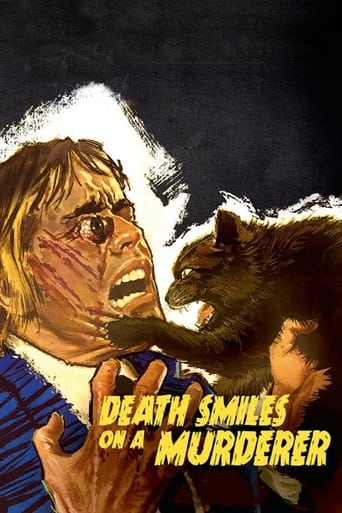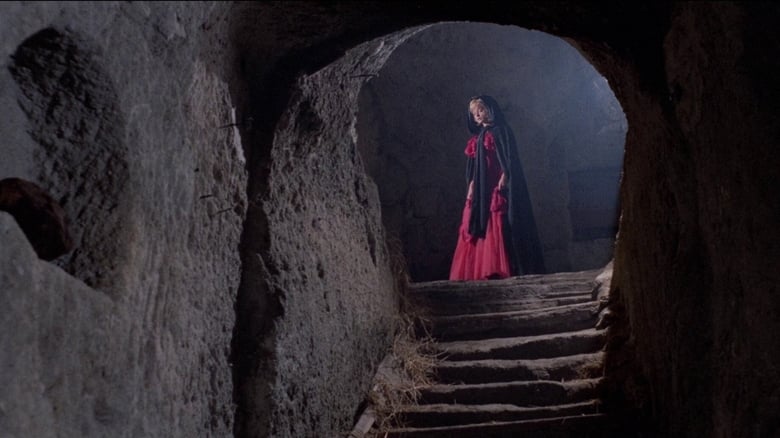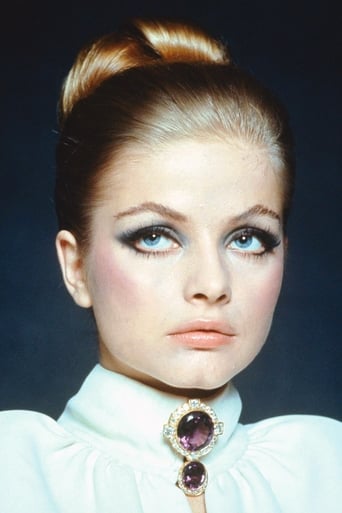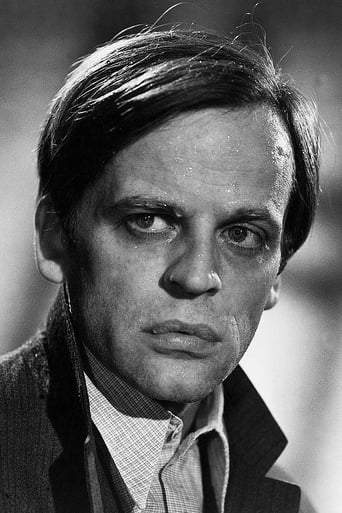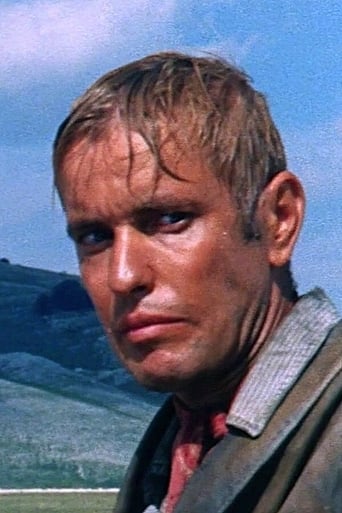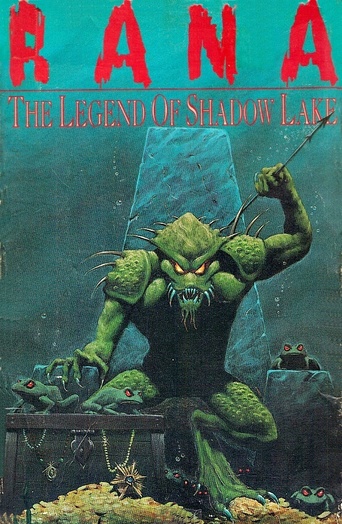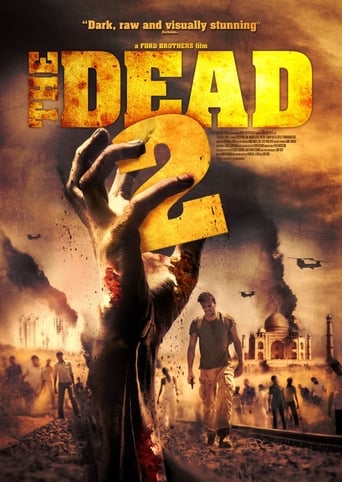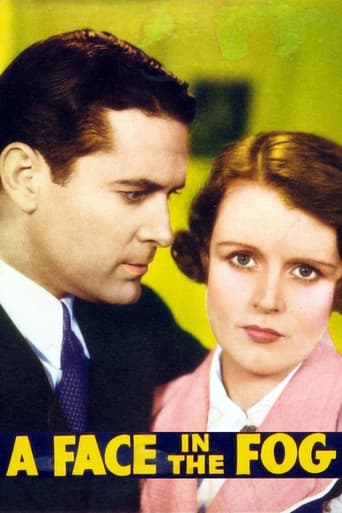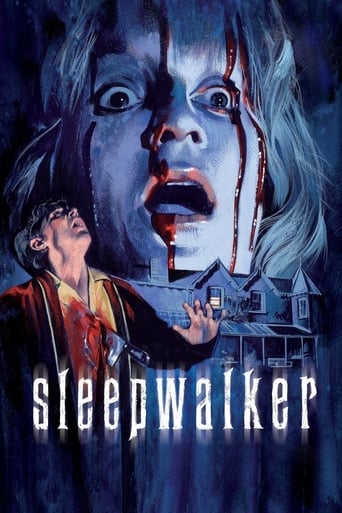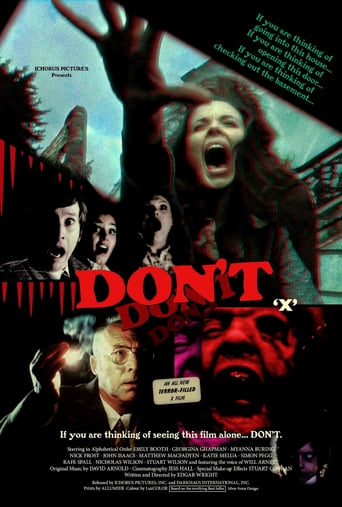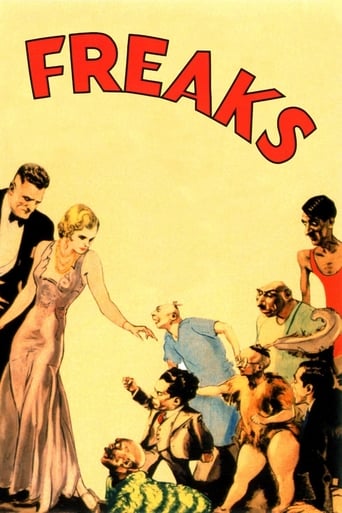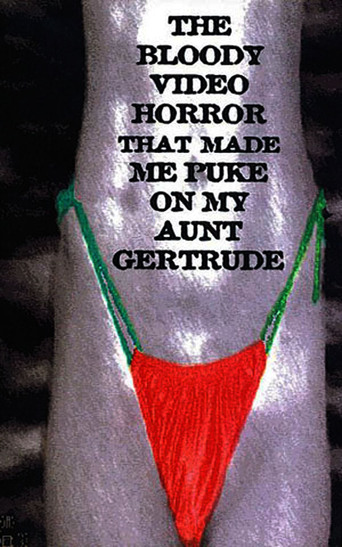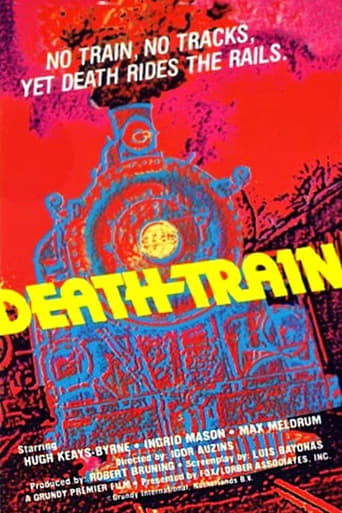Death Smiles on a Murderer (1973)
Greta is a beautiful young woman abused by her brother Franz and left to die in childbirth by her illicit lover, the aristocrat Dr. von Ravensbrück. Bereft with grief, Franz reanimates his dead sister using a formula engraved on an ancient Incan medallion. Greta then returns as an undead avenging angel, reaping revenge on the Ravensbrück family and her manically possessive brother.
Watch Trailer
Cast
Similar titles
Reviews
That was an excellent one.
Beautiful, moving film.
The best films of this genre always show a path and provide a takeaway for being a better person.
Like the great film, it's made with a great deal of visible affection both in front of and behind the camera.
Joe D'Amato gets a hard time for being a trashy director due to those porn films he made, but he often delved into other genres, and when he got them right, he often blew away the competition. This film, his official debut film (as he did a few Bava-style completion jobs for other directors) is a crazy mix of Gothic Horror and Giallo, and it's a beauty. Also, some people call it confusing, but it's not at all.At first we see brother Luciano Rossi lamenting the death of his sister Greta, plus we also get a flashback that shows that the relationship was a bit...er...intimate. Next thing you know, Greta's alive and getting involved in a carriage crash outside one of those huge mansions you get in 99% of these films. She's taken in by a sister and brother and examined by doctor Klaus Kinski. Now, Kinski is freaky enough looking, but when he leans over Greta all his veins stick out on his head, and he looks like a Klingon! I digress - Klaus finds a weird necklace on Greta, takes a pin and sticks it through her eyeball, and then leaves, thoughtful. Greta strangely shows no affects of having a pin shoved through her eye and sets her sights on bedding both the brother and the sister.Around this time it appears that Luciano Rossi is kicking about stalking a member of staff at the mansion who receives a very gory shotgun blast to the face. Yes, someone is out to kill everyone, but is it the creepy butler guy who is spying on everyone? Or the jealous sister, who tries to drown Greta in the bath, then beds her. It's not Klaus Kinski though, because he manages, using something on that weird necklace Greta had, to create a formula that can bring the dead back to life, which not only gets him killed by a mystery person, but also his assistant, and the poor corpse he brought back to life!I'll stop there with the plot, because what first appears to be a kind of period Giallo ends up being far more sinister. It's like Joe D'Amato thought the genre wasn't strange or gory enough, and packs the film with people with their guts or brains hanging out, others nailed to walls, having their faces slashed to ribbons, or having their eyeballs pulled out by a cat. Being Joe, he doesn't skimp on the sex either, as Greta gets it on with just about everybody. You also get two creepy actors for the price of one, with Kinski and Rossi getting their own space to roll their eyes and be weird. Giacomo Rossi-Stuart looks depressingly aged in this film for some reason.So once again Joe comes out on top like he did later in the post-apocalyptic genre with Endgame and 2020:Texas Gladiators, and the classic video nasty Anthropophagus. Maybe not so much with Ator The Fighting Eagle, which is a PG rated Conan rip-off that is great for all the wrong reasons.
Decidedly not for all tastes, 1973's "Death Smiles on a Murderer" is an Italian horror film from cinematographer-turned-director Aristide Massaccessi (now better known as Joe D'Amato). Rough sledding for most, but I admired all of the European fright flicks that aired regularly on Pittsburgh's Chiller Theater (IMDb lists this film as 92 minutes but my copy runs 84). In 1906 Europe, an incestuous relationship between siblings Franz and Greta (Ewa Aulin) ends abruptly when she falls for a handsome doctor (Giacomo Rossi-Stuart) who impregnates her, with both mother and child ending up dead. Her distraught brother has learned the secret of restoring life to the dead and subsequently revives her, with the Incan formula carved onto the back of an amulet which has her name and date of death on the front. In a nod to Edgar Allan Poe (one of many), she shows her gratitude by instantly slaughtering her beloved brother, the sharp claws of a black cat gouging out the man's eyes (shown in flashback only at the very end). Following a passage of 3 years, Greta is planted at the doorstep of a young couple, Eva and Walter (the latter the son of the doctor who had the affair with her), via a gory carriage accident that leaves the driver fatally impaled through the heart. Dr. Sturges (Klaus Kinski) provides the death certificate for the investigating detective, first examining the girl, who remembers neither her name or any recollection of her past. He soon learns that this is no simple case of amnesia (a telltale vertical scar on the side of her neck), proving it by inserting a pin in the unblinking girl's eye (a startling sight left intact on television). Dr. Sturges, already conducting similar experiments in life after death, recognizes the Incan symbols on the back of Greta's amulet, which help him restore life to a male corpse, only to be instantly strangled to death along with his mute assistant (the revived corpse is promptly snuffed out as well). Meanwhile back at the estate, both husband and wife separately declare their undying devotion to the beautiful stranger, with some nude frolicking that doesn't add up to much. The maid makes a sudden exit, haunted by the spectre of Greta's dead brother, only to have her face shot off by the same unseen assailant later responsible for the murders in the lab of Dr. Sturges (climactically revealed to be the couple's manservant). After an initially unsuccessful attempt to drown Greta in her bath, the wife succeeds in walling the girl up in a dark cellar, only to have the deceased return to haunt first the wife then the husband to their grisly ends. Greta then rewards the manservant's loyalty by slashing him to death (no explanation given as to how he knows her or why he protected her). The husband's doctor father (Greta's reason for vengeance) also meets his maker, trapped in the crypt of his daughter-in-law (whose eyes suddenly snap open!), leaving only the baffled detective still alive to try to sort out all the murder and mayhem. When he learns about the Incan symbols and their meaning, we flash back to Greta's brother revealing what he had done for her 3 years earlier, with his corpse only now discovered by the detective (untouched in the same spot). Having learned the identity of the mystery girl, he goes over the facts with his elderly wheelchair-bound wife, who promptly turns around to reveal herself as Greta, the 'angel of death' herself, her face displaying the smiling countenance of Mona Lisa (perhaps Jaibo was right in his review). Intentionally stronger on mood than coherence, it really only drags once Dr. Sturges exits the picture halfway through, with only the deviant love triangle dragged out until the climactic revelations. In what may have been her last role, the lovely Ewa Aulin gives the same kind of detached performance she did in 1968's "Candy," although she may have appreciated being effectively cast against type (her passivity works amazingly well considering the effect she has on all others, exactly like her character in "Candy"). Alas, Klaus Kinski is totally wasted in the sort of take-the-money-and-run kind of part that he nearly always accepted, with only a handful of lines and an unchanging look of consternation. Kudos to the other reviewers who made the effort to journey through the difficult plot line, I trust I succeeded in my own way.
This early D'Amato film bears some affinity to the work of Mario Bava, being a 19th Century Gothic horror long on style and atmosphere if short on coherence. The basic plot involves a brother who raises his sister from the dead (using an old Incan ritual) in order that she gets revenge on those who were responsible for her death; a number of gory murders ensues.D'Amato attacks the story is a very strange way, deliberately I would presume to emphasise the tale's strangeness and put the audience in a similar position of mystification as the characters find themselves under. This approach is not entirely successful, although the dizzying maze of Dutch angles, stalking and spying POV shots, extreme close-ups (especially of eyes) makes the film constantly compelling. Klaus Kinski gets star billing for what is essentially a bit part as a scientist in a sub-plot (which links with the Incan ritual) and his early demise is problematic, as his appearance and then disappearance have the stench of a red herring.The film seems to be an extended riff on the idea that human relationships are an unhealthy brew of thwarted desire, jealousy and rage. The most effective moments have the characters stalked by the dead sister, who turns from ravishing beauty to mouldering corpse from shot to shot. The party with masks and the idea that beauty can suddenly turn rotten lead me to suspect that the film is an unacknowledged inspiration for some scenes in Kubrick's The Shining and Eyes Wide Shut.The finale, with the dead sister being revealed as the old woman cohabiting with the detective, is half-hokum and half inspired derangement of time; like Nicholson's final Shining moment, frozen in a picture from the 1920s, this reveal suggests that the detective has been doomed timelessly to follow a case which is in some ways a re-enactment of is own marital relationship, a reflection of the deadly tortures which seemingly ordinary married people wish to enact on each other. The story bears some similarities to the work of Poe, and like D'Amato's Emanuelle's Revenge, it uses the images of immolation behind a wall from that storyteller's A Cask of Amontillado.
This movie seems interesting on paper: it's directed by the infamous Aristide Massacessi (aka Joe D'Amato) and it features overly intense German actor Klaus Kinski and Swedish nymphet Ewe "Candy" Aulin. But fans may find D'Amato being a little too classy, Kinski being a little too subdued, and Aulin being a little too dressed. This movie is a latter-day Italian Gothic but it was made at a time when those films, which had been big in the 60's, were in decline and the more delirious Italian gialli were ascendant. This film is a strange hybrid of the two--it has the period trappings of a Gothic horror but makes even less sense than your average giallo.The plot (if that word applies here)involves two different doctors who seem to be reviving the dead for some reason--or are they? (I'm not being mysterious here--I really don't know). One of them is Klaus Kinski, but I suspect the famously temperamental actor might have stormed off the set so they gave part of his role to somebody else. Ewe Aulin is the dead(?) woman who seems no worse for wear. After her carriage crashes on the estate of a nobleman (who coincidentally is the doctor's son),he and his wife take her in and they both fall in love with her. The wife, however, is very jealous (although it's not clear of whom) and keeps trying to kill this possibly already dead girl. After an unsuccessful bathtub drowning (which naturally turns into a steamy lesbian sex scene) she seals her in a tomb with the family cat (for yet another Italian homage to Edgar Allen Poe) before the movie sinks completely into incomprehensibility.This film resembles other latter-day Italian gothics like "The Devil's Wedding Night" (with Rosalba Neri) or "The Night Evelyn Came out of the Grave" (with Erika Blanc). I would have preferred Neri or Blanc to Aulin in this kind of movie--they all look good naked, of course, but Blanc and Neri are a lot better in these evil roles. The cinematography here is definitely superior to the other two films, however, and is the best thing about this movie (it's easy to forget that D'Amato was a superb cinematographer before he became a world-renowned pornographer). Fans of virtuoso cinematography, non-linear Eurohorror, and badly-dubbed Eurobabes, who aren't bothered too much by a complete lack of plot will probably like this. Others may not.
